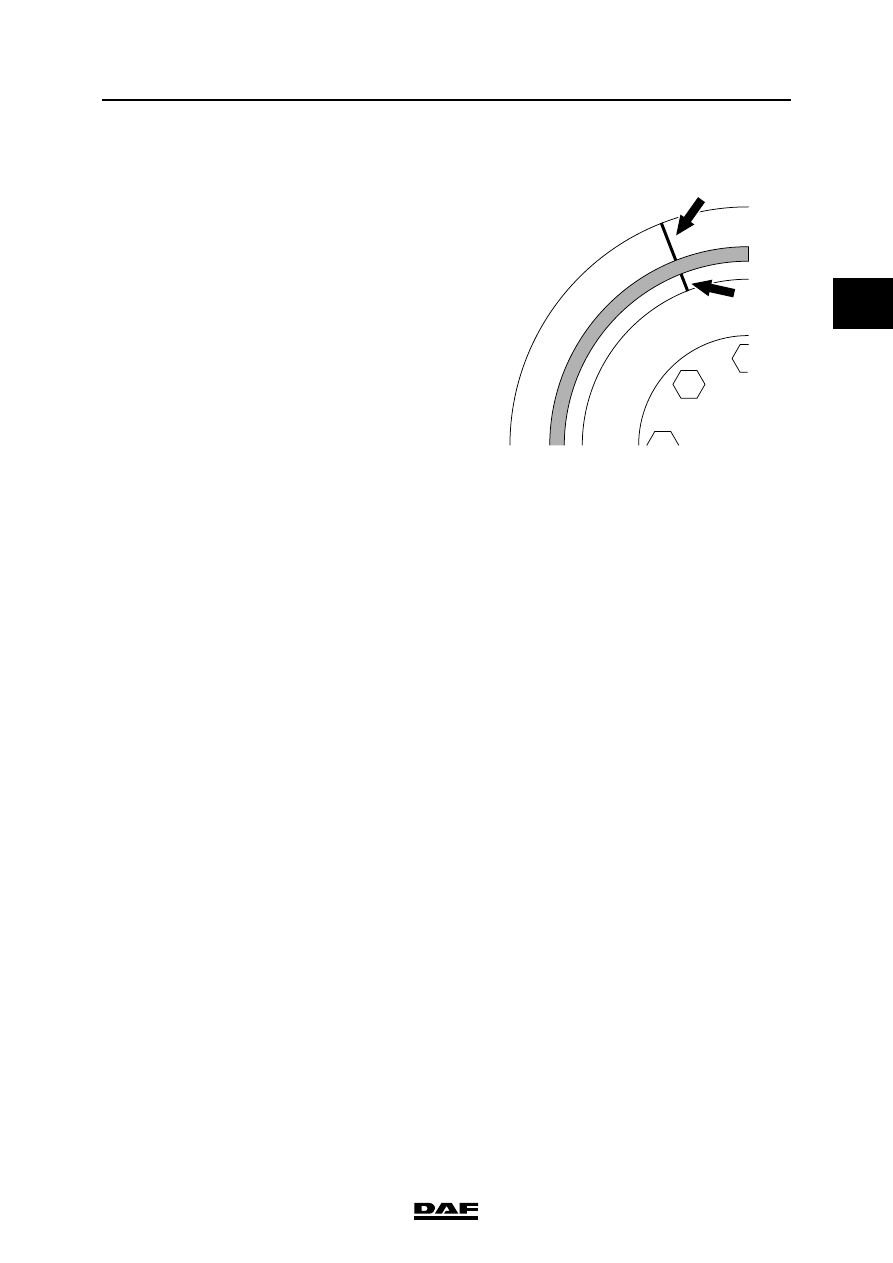DAF LF45, LF55 Series. Manual - part 166

©
200505
3-11
Checking and adjusting
BE ENGINE
ΛΦ45/55 series
2
2
3.7 INSPECTION, VIBRATION DAMPER
1.
Check the reference lines. The reference
lines should form a single line.
2.
Inspect the rubber part for damage or
degradation. If the rubber part shows cracks
or if there are bits of rubber missing, the
vibration damper must be replaced.
3.8 INSPECTING THE CYLINDER HEAD
1.
Check the sealing plugs and expansion
plugs of the cylinder head for leaks. If
necessary, pressure-test the cylinder head.
2.
Inspect the cylinder head for damage to the
sealing surface and any cracks.
3.
Check the cylinder head for smoothness
using a straight edge and feeler gauge. See
"Technical data".
Note:
The cylinder head must be replaced if it does
not meet the specified values.
G0 00 199